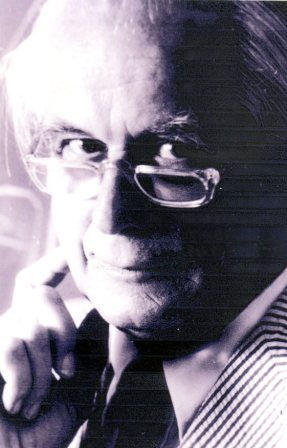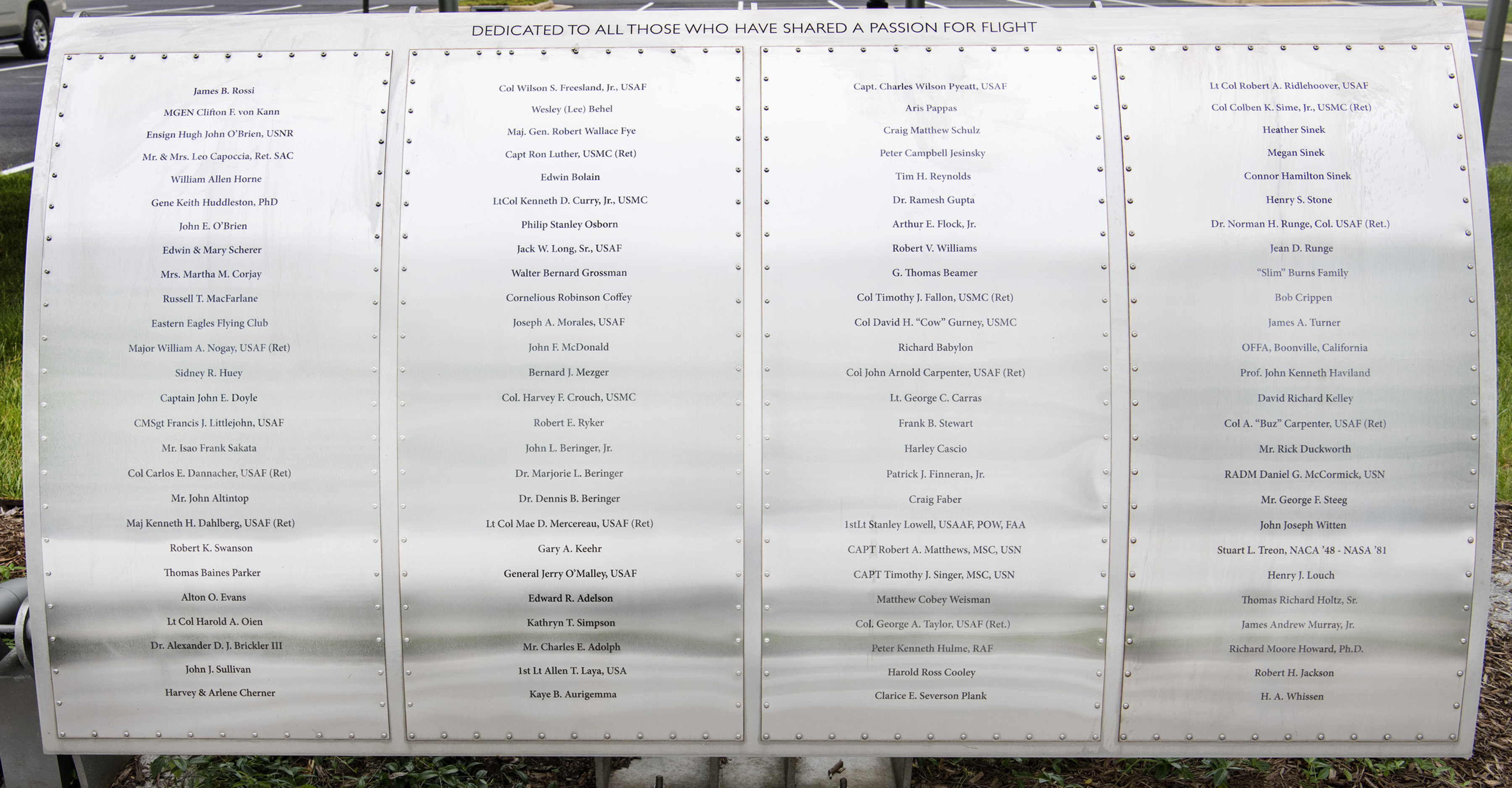Prof. John Kenneth Haviland

Foil: 37 Panel: 4 Column: 1 Line: 13
Wall of Honor Level: Air and Space Leader
Honored by:
Mr. George Matthews
John Kenneth (Ken) Haviland was born in Mt. Kisco, NY on January 19,1921 to John Haviland, Sr., a former US NAVY OFFICER, and Phyllis Aldridge of Southampton, UK. Ken's father died in 1925, and his mother took Ken back to England to live with his aunt and grandfather. Ken attended private schools in Oxford and Middlesex from 1929 to 1936, after which he enrolled in the B.Sc. Engineering program at Nottingham University and began flying lessons in a local club. Ken's interest in aeronautics had been evident from a young age when he built and flew model airplanes, even creating his own designs, which he preserved in his diary. Now, at age 16, he began what became an active and very successful lifetime career in the field. When his mother had re-married in 1932, Ken had been naturalized British, thus enabling him to enter flight training with the RAF Volunteer reserve, flying Miles Magisters.
Following the outbreak of war in 1939, he was called up for active duty and trained further in de Havilland Tiger Moths and North American T-6's. In July 1940 he was commissioned as Pilot Officer and posted to the Army Cooperation School in Old Sarum, flying Hawker Hectors and Westland Lysanders . In September he was sent to an Officer Training Unit (OTU) in Norfolk and later to 151 squadron at Digby, Lincolnshire, flying Hurricanes during the last three months of the battle of Britain. Later, the squadron moved to Northamptonshire to start night flying, piloting Boulton-Paul Defiants to supplement the Hurricanes, the former subsequently proving to be unsatisfactory for this duty. By April 1942, the night flying role had been given to Mosquito IPs; and the squadron converted to this aircraft after twin-engined training. One year later Ken was assigned to the OTU at Charterhall, Scotland, instructing in Beaufighter IPs and, after a month, to another OTU in Shropshire, once again in Mosquito IPs.
In July, while attending gunnery school in Spitfire IPs at Sutton Bridge, Norfolk, Ken married Eleanor Valerie Baker, who was also in uniform as a writer with the WRNS. In February 1944 he was transferred to become a Flight Commander in 192 Squadron, 100 Group, Bomber Command, in Norfolk, this time flying Mosquito IV's, in which he completed 11 radar surveillance flights over Germany. On one such mission, Ken experienced the flight surprise of his life when, having to land his Mosquito in the dark because of a reported enemy aircraft in the area, he found himself unable to control his airplane, which seemed to want to veer off to the side. He couldn't even cut the ignition on the port engine without shutting off the fuel valve, and he noticed it seemed unusually dark overhead. Also, there was a strange object sticking in his canopy, which turned out to be the exhaust pipe of a Halifax bomber that had landed right on top of, him! The bomber pilot had lost his radio and was also landing in the dark at a steeper angle than the Mosquito, nearly crushing the smaller airplane.
Three months later, Ken moved to 141 Squadron to fly Mosquito IPs and VPs, carrying out 39 bomber support sorties over France and Germany for the next year. He was then assigned to a Special Duties Squadron of B-17's as Adjutant, mainly concerned with crews liberated from P.O.W. camps. In June he was posted to Nottingham University Air Squadron, lecturing and giving flight demonstrations on Tiger Moths and Magisters. In July, Ken and Valerie celebrated the birth of a daughter, Susan. Four months later, Ken was demobilized with the rank of Flight Lieutenant, once again to attend Nottingham University after amassing a total flight time with the RAF of 1562 hours in eleven different aircraft types and having been awarded the Distinguished Flying Cross for his long term of meritorious service.
The following June, Ken graduated from Nottingham with a B.Sc. in Mechanical Engineering and shortly thereafter was employed by Bristol Aeroplane Company as Structures Engineer. His career in aircraft structures and design continued when he moved to Canada in 1947 to accept a position as Senior Research Officer in Structures with the Canadian Research Council in Ottawa and, in mid-1948, with the Preliminary Design section of Canadair, Ltd., in Montreal. By 1949, Ken felt the urge to fly again and joined the RCAF, where he accumulated a total of 133 hours with the rank of Flying Officer in T-6's and de Havilland Vampires. In November of the next year, his eldest son, David, was born; and, eighteen months later, the family immigrated into the United States.
In the U.S., Ken was employed by Chance Vought Corp. for the next eight years, working with the Flutter and Dynamics Section, and later being named Supervisor of the flutter group. In the meantime, in 1956, Ken became a naturalized US citizen, having lost his dual nationality at age 23; and the family increased by one, as Valerie gave birth to their second son, Peter, in June 1957. Eighteen months later, Ken decided to broaden his professional education by enrolling in the graduate program in Aeronautics and Astronautics at MIT. He completed his research work in rarefied gas dynamics and received the PhD degree in a short two and one-half years. That fall he returned to Chance Vought, now LTV, as supervisor in the Structural Thermodynamics Group of the Missiles and Space Division and later as Manager of the Materials and Structures Section.
During the next two years, Ken and Valerie's last two children were born, son Laurence in late 1961 and daughter Julia in April 1963, while their father continued his work in space and missile structures. In the summer of 1967, he changed careers once more by accepting an appointment as Professor of Aerospace Engineering at the University of Virginia, where he taught courses in Flight Dynamics, Aircraft and Spacecraft Design, and Aerospace Structures. He initiated and conducted research on vibrations and controls in helicopters and on stresses in ultralight aircraft. He also pioneered the departmental use of digital computers in the teaching of aircraft and spacecraft structures and design.
In 1969, Ken was contacted in the U.S. by RAF ace Peter Townsend to accompany him to London for a command performance of the motion picture "Battle of Britain" for Queen Elizabeth, to whom he was presented at a formal ceremony. Finally, after twenty-four active years at the University, Ken was retired in June 1991 with the rank of Professor Emeritus in Aerospace Engineering; and he and Valerie began a more relaxed lifestyle in their Albemarle County home.
Sadly, following an extended illness brought on by a spinal injury suffered while working in his garden, Ken died on July 1,2002. He was the last living American to have fought in the RAF during the Battle of Britain, and his name was listed on a plaque in the Smithsonian Air and Space Museum on the Mall and inscribed on a memorial monument on the Thames River bank in London near Big Ben. He was survived by Valerie, his wife of fifty-nine years, who died in February 2006, and by his five children, all still living in the United States. Ken was a distinguished and much respected faculty member of The University of Virginia School of Engineering and Applied Science, and he will always be remembered by colleagues as a most gracious host in his lovely home and as a warm and steadfast friend.
Wall of Honor profiles are provided by the honoree or the donor who added their name to the Wall of Honor. The Museum cannot validate all facts contained in the profiles.
Foil: 37
All foil images coming soon.View other foils on our Wall of Honor Flickr Gallery
